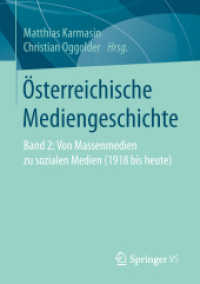Full Description
"This book is a remarkable achievement" Gerd Gigerenzer
This book offers practical approaches to working in a new field of knowledge - Civic Statistics - which sets out to engage with, and overcome well documented and long-standing problems in teaching quantitative skills.








